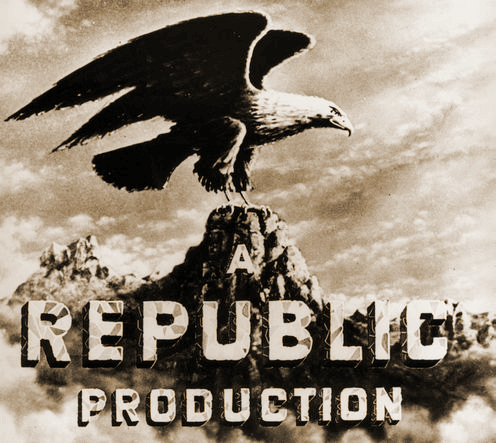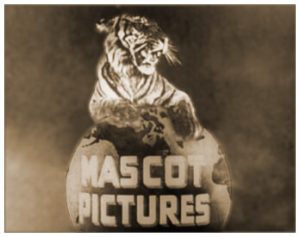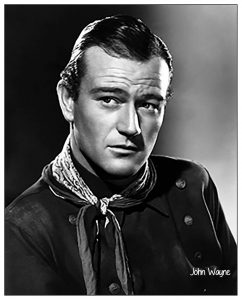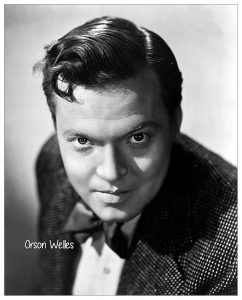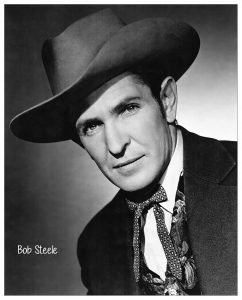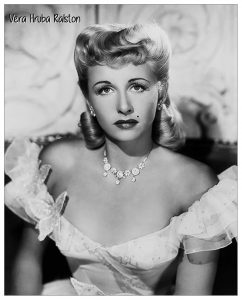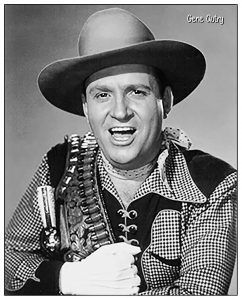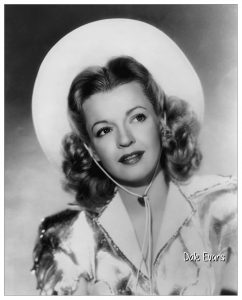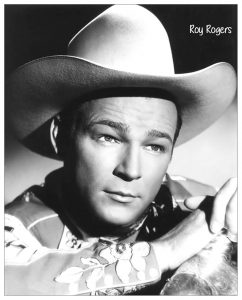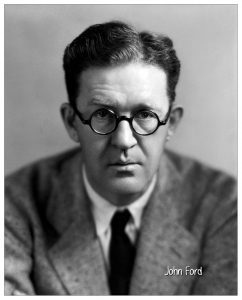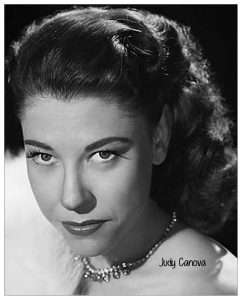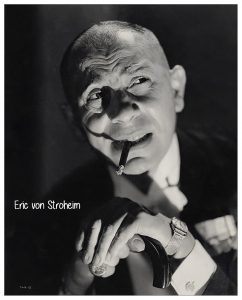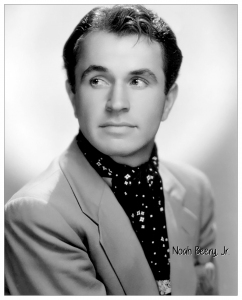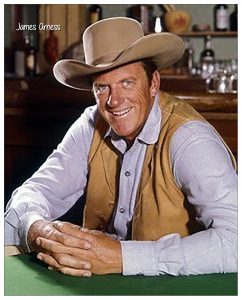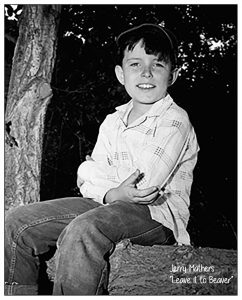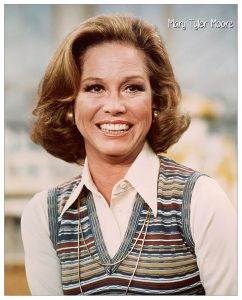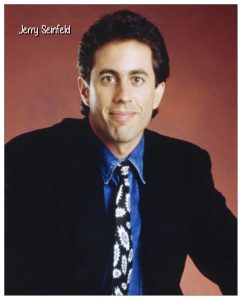Mack Sennett Studios Mascot Pictures Republic Pictures
MTM Studios CBS Studio Center
Studio City
4024 Radford St. In continuous operation since 1927,
The only studio in a city that wanted to compete with Hollywood, Culver City, and Burbank.
John Wayne Gene Autry Roy Rogers
Leave it to Beaver Gunsmoke The Mary Tyler Moore Show Seinfeld

Click to enlarge
Key Dates for this studio lot:
- 1926 Mack Sennett begins construction
- 1927 Sennett moves in and closes his Edendale studio
- 1933 Sennett declares bankruptcy and shutters the plant
- 1933 Nat Levine leases the studio from bankruptcy trustees for his Mascot Pictures
- 1935 Herbert Yates engineers merger with Mascot, Monogram pictures, and buys several smaller firms to form Republic Pictures. Takes over the studio lot
- 1950 Republic enters the television market by being the first studio to release its film library for broadcast
- 1958 Republic ceases production and becomes a rental lot
- 1963 CBS becomes the owner and renames the lot CBS Studio Center
- 1967 CBS buys the lot
- 1970 MTM (Mary Tyler Moore) Productions becomes the primary tenant for its show and its 3 spinoffs
- July 1982 CBS forms a partnership for ownership of the lot. It is renamed CBS/Fox Studios
- Shortly thereafter Fox sells its interest to MTM and the studio is once again renamed. Now it is called CBS-MTM Studios
- In March 1992, MTM sells its interest in the studio back to CBS, once again becoming CBS Studio Center
- 2007 CBS moves its Los Angeles TV and radio stations from their small studios in Hollywood to larger studios on the lot

Mack Sennet Studios
Active 1927-1933
Over the course of a decade and a half, Mack Sennett established himself as the "King of Comedy." He packed so much movie magic into his Edendale studio that he was forced to lease more studio space to keep up with production.
In 1927 he was given a piece of land in Studio City to build on by a group of real estate developers who hoped Sennett would attract other studios to the area, but no one else came.
Sennett, a very successful studio head, producer, and director, created a brand new "Fun Factory" and transferred production, closing his Edendale plant. He not only need more studio space but needed modernization. He anticipated the coming of the sound era and wanted to be prepared. The Edendale was just too small and antiquated to transform. He needed to spread out.
Unfortunately for Sennett, his move was very expensive and ill-timed. The silent era was coming to an end, and Sennett was not prepared. The new studio proved to be very expensive, and the stock market crash of 1929 left the entire industry struggling. Sennett also made some bad real estate and oil investments, and by he was forced into bankruptcy. His style, also, did not lend itself to sound, and his popularity diminished.
He lost his new studio to his creditors. As much as he resisted, he was forced into bankruptcy . Mack attempted a comeback with Educational Pictures after which he never worked in the movie business again.
Mascot Pictures Studios
Occupied the lot from 1933-1936
As Sennett was forced into bankruptcy and creditors took control, an unlikely small time movie maker moved in and made a stab at the big time. Nat Levine, starting as a low level employee for Marcus Lowe ( head of M-G-M), apprenticed himself with a series of industry jobs, eventually deciding Hollywood was they place to make his mark. He landed there in 1921 trying his hand as an independent film distributor.
head of M-G-M), apprenticed himself with a series of industry jobs, eventually deciding Hollywood was they place to make his mark. He landed there in 1921 trying his hand as an independent film distributor.
It didn't take long for him to decide the way to make real money was in the film production end of the business. In 1926 Levine formed Mascot Pictures. He made a name for himself producing low budget serials (also known as chapter plays) using on-their-way-down former stars and athletes, paying them little, and making 200-300% profit. Levine was the king of serials, producing more than anyone else.
He shot his movies on location and at rented stages across Hollywood but realized he could save money and increase profits if he had his own facility.
Though Levine had an opportunity to buy the abandoned Sennett lot from the bankruptcy trustees, he decided to lease instead, with an option to buy. It was a
decision he would later regret. Though he had the money to buy, he did not. Had he bought the studio then sold to Republic Pictures, he would have made more money that all his other activities. Instead he gave his option to Republic chief, Herbert Yates, as a part of his 1936 merger with several other companies into Republic Pictures.
Levine's reign as a Mogul was short-lived. He stepped down from CEO to Studio Chief which lasted only a few more years, then was unceremoniously dumped.
Levine's major claim to fame was that he gave John Wayne his first major starring role in the chapter play "The Three Musketeers."
Levine made millions, and lost millions. After attempts at resurrecting his career he spent the last 20 years of his life as a theater manager in Redondo Beach, CA. Nat Levine died at the Motion Picture Retirement Home in 1989.
Republic Pictures Studios
Active 1936-1958.
Republic had a special niche in the movie business. From the early 1930s to the late 1950s Republic was the large Poverty Row studio that hought it was a Major. They specialized in low budget "B" westerns and continued as Mascot's successor as the king of the serial chapter play. They planted their flag and their legacy on low budget productions with high revenues. And from time to time they ventured into "A" big budget features.
They also had and another legacy. It was the studio that made John Wayne, Gene Autry and Roy Rogers famous. Republic invented the singing cowboy.
Under Republic, the studio at 4024 Radford grew and flourished. They added many sound stages and built a backlot that was the envy of many larger studios. They also had a studio ranch in Newhall that had western towns and Mexican villages. It truly became a major studio during its 20+ years of life.
Herbert Yates and CFI
Herbert Yates may be the most powerful person in the industry that no one ever heard of. Consolidated Film Industries (CFI) was one of the major film processing companies with plants on both coasts. By this time Yates owned much of the studio property in Fort Lee, NJ, and had several locations in Hollywood. Yates made a fortune by processing film for companies who could not pay him, then taking their assets in payment. In this way his Republic Laboratories was able to buy out smaller competitors and form CFI. He was known as ruthless and greedy.
But, he wanted a bigger Hollywood presence. He wanted to own a studio.
Nat Levine controlled the studio that Mack Sennett built and Yates wanted. A brand new, totally modern studio. Levine financed his operation with money from Yates. The writing was on the wall.
The Merger of CFI, Mascot, and Monogram
In 1935 Yates engineered a merger and would become such a major production force for the next 20 years and create a studio legacy in both name and real estate.
Yates convinced Levine to merge his Mascot with CFI and Trem Carr's Monogram Pictures. Thinking he was verging on a major opportunity, Levine gave Yates his option as part of the merger, even though he had acquired the funds to close on the purchase himself. Yates bought the lot for pennies on the dollar. Levine regretted the merger for the rest of his life. Carr wanted out almost immediately.
The newly minted Republic Pictures Corp. simultaneously engineered a buyout of small competitors Liberty Pictures, Chesterfield Pictures and Larry Darmour's Majestic Pictures. This consolidated a large portion of what were know as the "Poverty Row" studios and cemented Yates position. Yates wanted everyone's assets, scripts, and player contracts. What he didn't want Levine or Carr, or the owners of the other studios.
Yates entered the movie business with an experienced production team, a stable of contracted actors, a star or two, a distribution network, a modern studio, and a boatload of cash.
Republic during the Television Era
In the early 1950s, Republic was the first major studio to license its films for television broadcast while it retooled itself to take advantage of the new medium. Though they lacked the financial resources to be in television production themselves, the lease studio and backlot space to other studios to produce such shows at Gunsmoke, and Leave it to Beaver.
Republic Ceases Production
In 1958 Herbert Yates announced Republic would be getting out of production and the lot would become a rental studio. CBS became the major tenant until they bought the lot from Republic in 1965.
Click to enlarge
Related Pages:
CBS
Television City
Columbia Square
Active 1963-present.
Republic ceased production in 1958 and as it diversified into other areas of business, the studio became a rental lot. In 1963 CBS became the primary tenant renaming it CBS Studio Center and in 1967 purchased it outright. This transaction ends the period of the moguls as the lot passes into corporate hands.
In 1970 MTM Productions becomes the primary tenant at the lot to produce the Mary Tyler Moore Show, and its three spinoffs, Rhoda, Phyllis, and Lou Grant. The lot underwent significant renovations to accommodate the transition from film to television production.
In a series of weird transactions, CBS formed a partnership with Fox for the studio in July 1982 forming CBS/Fox Studios The relationship was short-lived as Grant Tinker, Mary Tyler Moore's husband and a media executive, bought Fox's interest the lot forming CBS-MTM Studios. Then, in March 1992 CBS bought out MTM to, once again, become CBS Studio Center. It hasn't changed since.
More Photos of the Studio Throughout the Years
From the beginning, this lot was destined to be one of the great studio sites. Though never a major studio, it has always operated the way a major studio operates: producing its own movies and shows, renting its stages to outside producers, and sporting a back lot.






